AMRUTHA SHERGILL TOP 10 PAINTINGS

1. The Bride’s Toilet
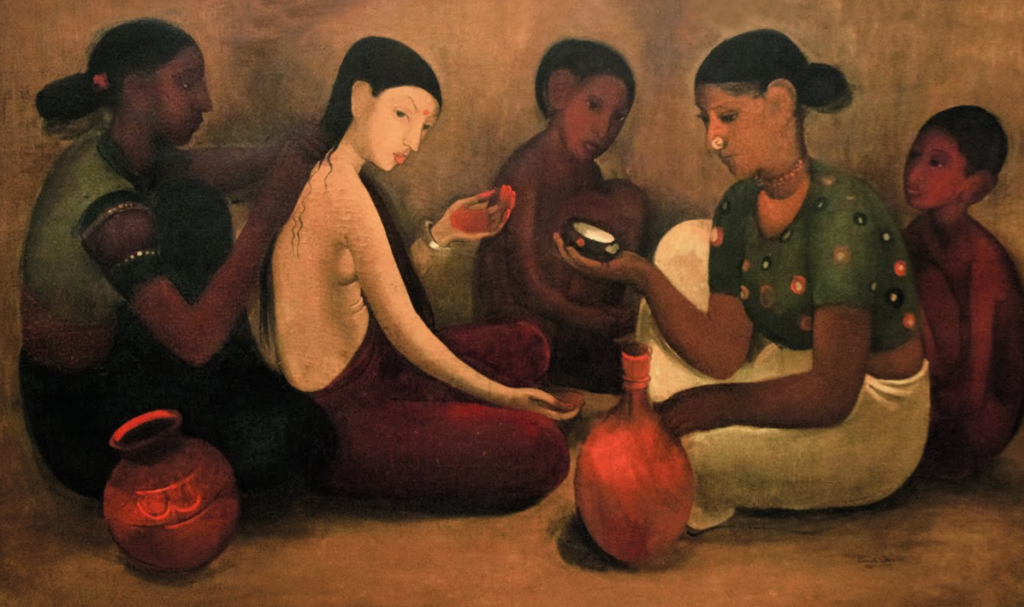
Amrita SherGil’s “The Bride’s Toilet” masterfully captures the intimate and private moments of a bride preparing for her wedding. The painting, characterized by its bold and vibrant colors, showcases SherGil’s fusion of European and Indian styles. The bride’s contemplative expression and the luxurious textures of her attire convey a deep sense of personal and cultural significance. The painting tells the story of transition, anticipation, and the intricate rituals surrounding marriage, making it a poignant reflection of both personal and societal transformations.
2. Village Scene

In “Village Scene,” Amrita SherGil brings rural India to life with her characteristic bold strokes and vivid colors. The painting depicts a simple yet profound moment in a village setting, highlighting the daily lives of its inhabitants. SherGil’s use of earthy tones and geometric shapes reflects a blend of Indian folk art with modernist influences. The story conveyed through this painting is one of community and the harmony of rural life, offering a glimpse into the vibrant and enduring spirit of traditional Indian villages.
3. The Little Girl in the Blue Blouse
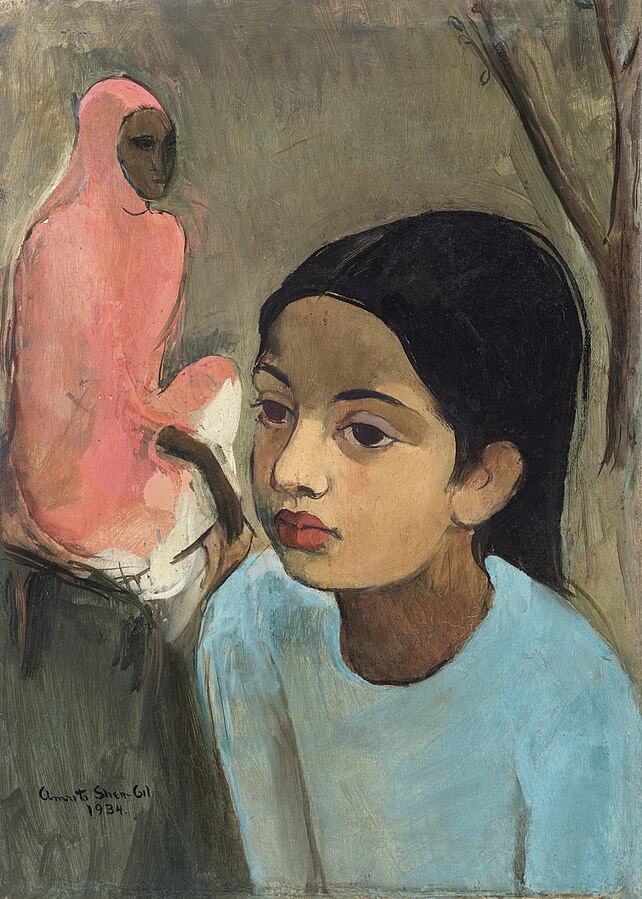
Amrita SherGil’s “The Little Girl in the Blue Blouse” presents a striking portrait of a young girl, characterized by its expressive use of color and form. The painting showcases SherGil’s distinctive style, combining Western portrait techniques with Indian subject matter. The girl’s direct gaze and the vibrant blue blouse draw attention to her innocence and individuality. This artwork tells the story of childhood and the rich diversity of Indian experiences, capturing a moment of pure, unfiltered emotion.
4. SelfPortrait

In her “SelfPortrait,” Amrita SherGil explores themes of identity and introspection. The painting features a bold and introspective representation of herself, with striking use of color and form. SherGil’s expression is contemplative, reflecting her inner thoughts and struggles. The style combines Western realism with Indian sensibilities, highlighting her unique perspective as both an artist and a woman. This selfportrait tells the story of selfdiscovery and personal reflection, providing insight into SherGil’s complex inner world.
5. Two Women
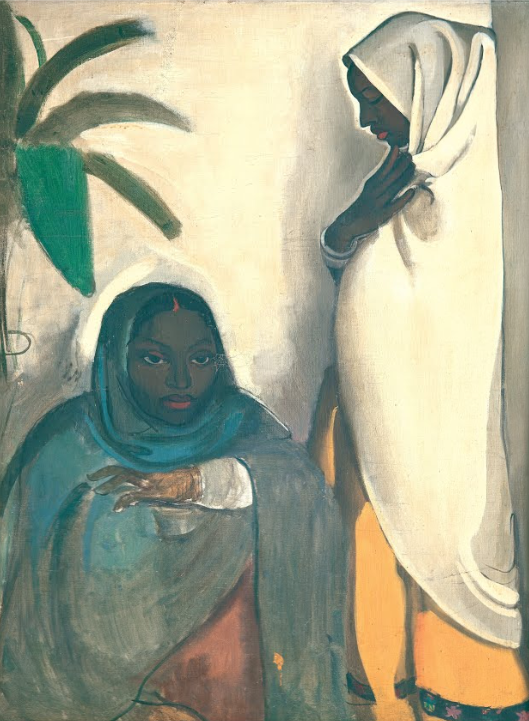
“Two Women” by Amrita SherGil captures a moment of quiet companionship and shared experience. The painting’s use of rich, earthy tones and simplified forms highlights the bond between the two figures. SherGil’s style merges traditional Indian aesthetics with modernist influences, creating a timeless representation of female solidarity. The story told through this painting is one of intimate connection and the strength found in female relationships, offering a glimpse into the everyday lives and emotions of women.
6. Brahmacharis
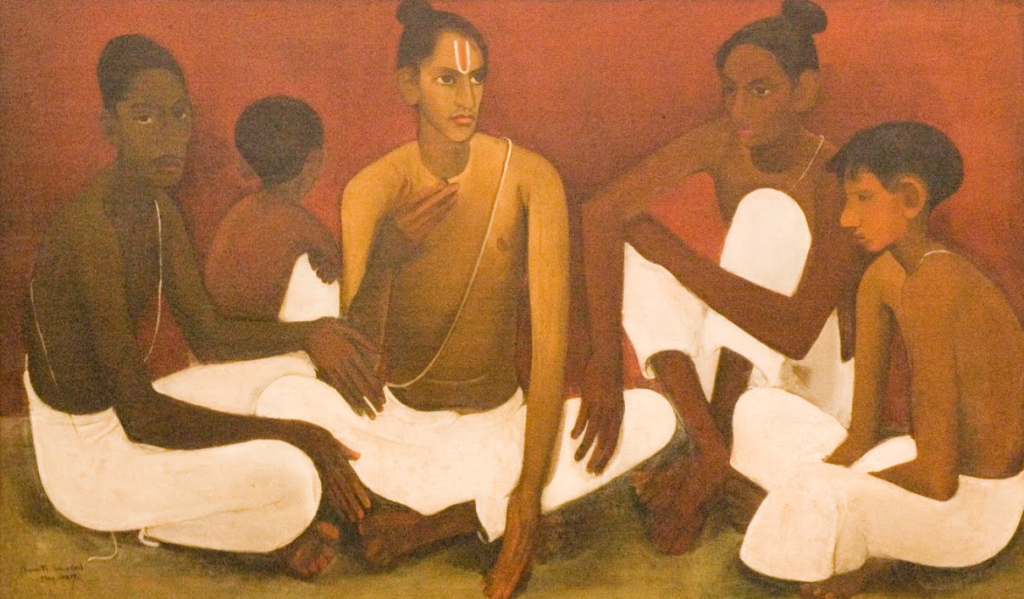
Amrita SherGil’s “Brahmacharis” presents a contemplative scene of young ascetics in meditation. The painting’s use of muted colors and serene composition reflects a sense of peace and spiritual focus. SherGil’s style blends Western techniques with Indian spiritual themes, capturing the essence of ascetic life. The story conveyed through this artwork is one of dedication and inner peace, portraying the disciplined and contemplative nature of those seeking enlightenment.
7. Punjabi Girl
“Punjabi Girl” by Amrita SherGil is a vibrant and evocative portrait of a young woman from Punjab. The painting’s use of bold colors and dynamic composition reflects SherGil’s modernist approach while honoring traditional Indian aesthetics. The girl’s expressive face and elaborate attire tell the story of cultural pride and individuality. This painting celebrates the beauty and strength of Punjabi women, capturing their unique cultural identity and personal character.
8. The Hindu Bride
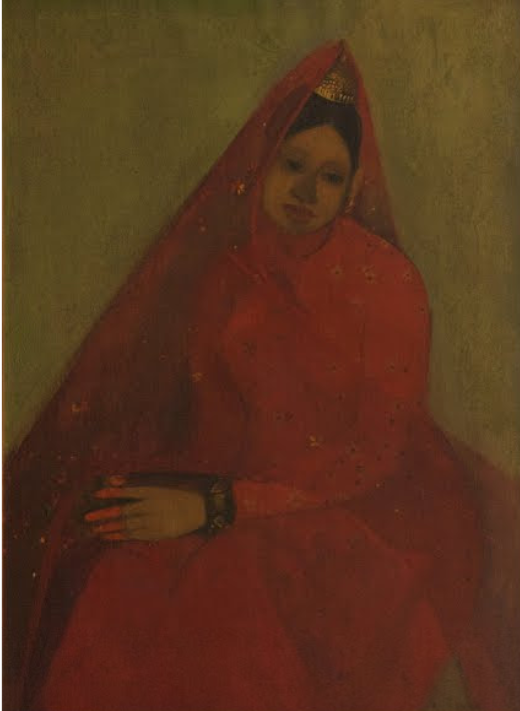
In “The Hindu Bride,” Amrita SherGil explores the rich symbolism of a traditional wedding ceremony. The painting features a bride adorned in intricate attire and jewelry, captured with a striking use of color and texture. SherGil’s style merges realistic detail with a sense of emotional depth, reflecting the gravity and significance of the occasion. The story told through this painting is one of cultural tradition and personal transformation, portraying the profound moment of entering a new phase of life.
9. Mother and Child

Amrita SherGil’s “Mother and Child” presents a tender and intimate portrayal of maternal affection. The painting’s use of warm colors and soft lines highlights the bond between mother and child. SherGil’s style combines traditional Indian themes with a modernist approach, emphasizing the emotional depth of the relationship. The story conveyed through this artwork is one of love and nurturing, capturing the universal and timeless connection between a mother and her child.
10. The Violin Player
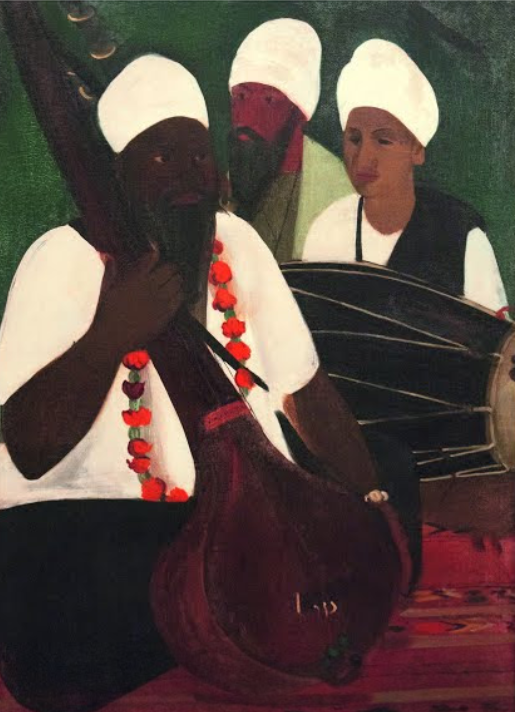
“The Violin Player” by Amrita SherGil captures the soulful expression of a musician lost in his art. The painting’s rich colors and fluid lines reflect SherGil’s modernist technique while celebrating the traditional Indian art form. The violinist’s focused demeanor and the dynamic composition convey a story of passion and dedication to music. This painting tells the tale of artistic devotion and the profound connection between the musician and his craft.
